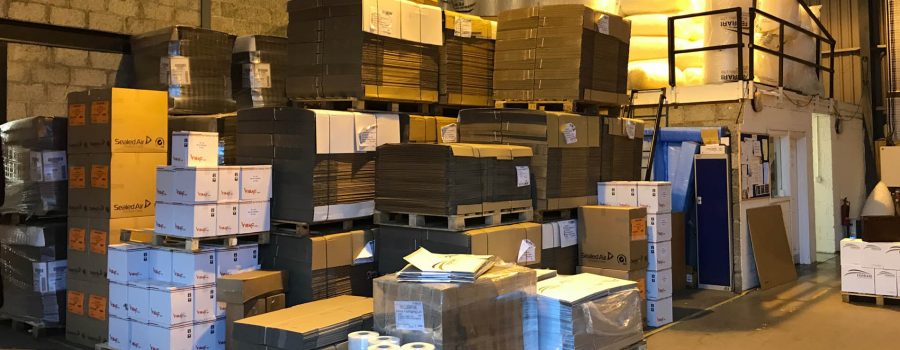
Block stacking has been a favourite method of storing pallets and IBCs in warehouses across the UK for two main reasons:
- It requires no capital expenditure
- That’s the way we have always done it
However, with moves by the HSE to minimise the heights which companies are block stacking pallets, there is a growing acceptance that change is required.
And whilst the method requires no expenditure on racking systems, it is by no means a ‘free’ solution as it comes with a number of ‘hidden’ costs which must be taken into consideration.
Space Utilisation
In theory, block stacking should be an excellent method of space utilisation, as pallets are stacked directly on top of each other and packed tightly in the available area, with every stow area having its own SKU.
But the challenges start to come into play when faced with rising numbers of SKUs with different movements in stock and the need to create aisles to allow accessibility.
This can lead to large areas of underutilised space which can often force companies to use external storage or require additional storage areas.
Maximisation of Height
As racking requires a degree of clearance between beam levels and pallets to allow movement of stock, people often see block stacking as a more effective way to maximise height.
However, the HSE is clamping down on situations which could present a risk in the warehouse such as pallets and IBCs being stored unsafely on top of each other, especially when the pallets create uneven surfaces for stacking.
Space utilisation will be severely compromised should the HSE limit block stacking in your warehouse to 2 or even 3 high.
Damage to Goods
Damage to goods is often cited as one of the biggest issues when block stacking, particularly for companies looking to stack high value or premium products.
The simple solution is to limit the number of pallets being stacked on top of each other to 2, however, this will inevitably compromise space utilisation and often forces companies to store more pallets with external storage providers and bear the associated costs.
Efficiency/Speed
When it comes to warehouse efficiency and movement of goods, block stacking is, in general, seen as being very poor and as a result requires a higher number of forklift trucks, and therefore increased labour costs, than other systems on the market.
Accessibility may not be a major issue when there is a relatively low number of SKUs, however, when you analyse the time being taken to continually move pallets in the warehouse in an attempt to maximise space utilisation, the hidden costs which are incurred on a daily basis can amount to a significant value on an annual basis.
What Are the Alternatives to Block Stacking Pallets?
Firstly, let’s start by saying that block stacking can be an effective solution for certain projects and in certain roles such as marshalling areas.
However, if you are looking to increase capacity, maximise space utilisation and reduce costs in your warehouse, you may want to consider the following key solutions:
- Maxi Cube Shuttle Racking – High Density, Semi-Automated Storage Solutions
- Maxi Cube Push Back Racking – High Density, Dynamic Storage Solutions Using Pallet Carts
- Maxi Cube Pallet Live Racking – High Density, Dynamic Storage Solutions Using Rollers
Mezzanine floors may be a potential solution in certain circumstances, however, the cost benefit analysis will show that the solution will only deliver a fraction of the benefits compared to these alternatives.
Check out the following Projects
Major Drinks Company Achieves 242% Increase in Finished Goods Warehouse With Shuttle Racking
Shuttle Racking Replaces Block Stacking Approach in Cold Store
Block Stacking Problems | Block Stacking Costs | Block Stacking Dangers

